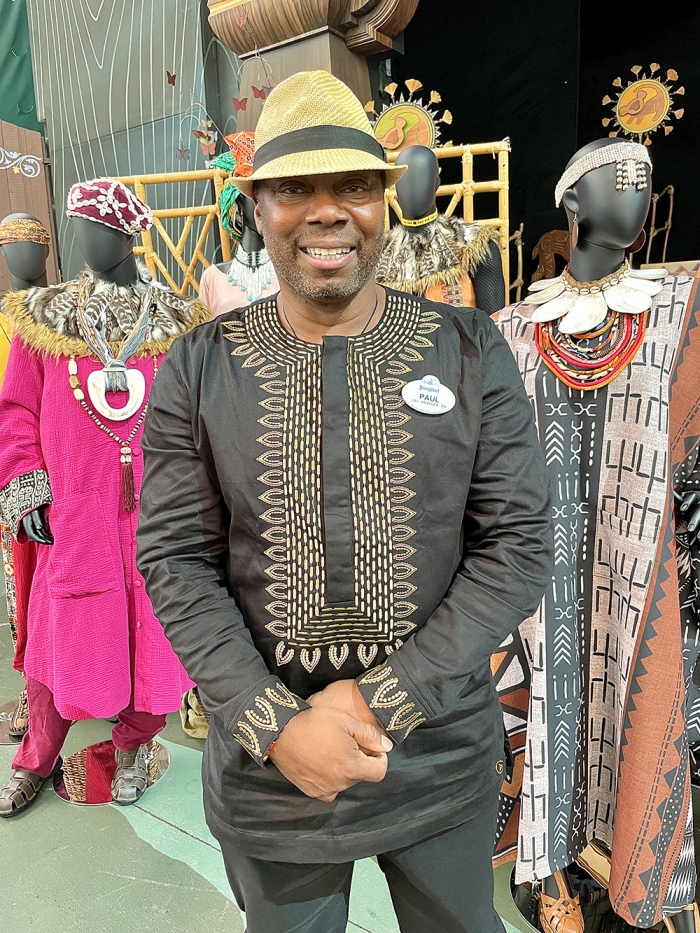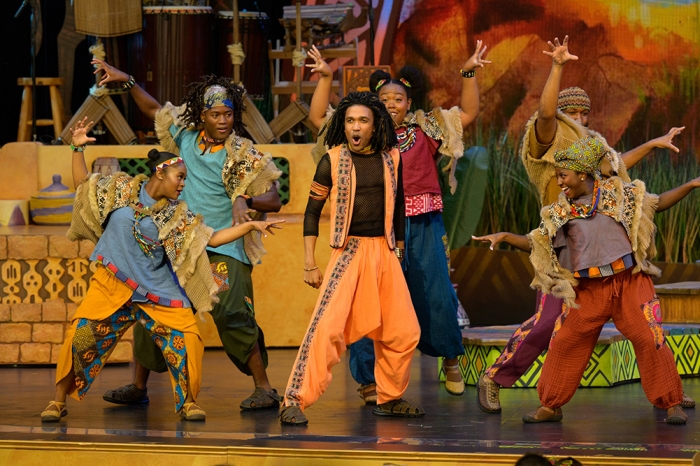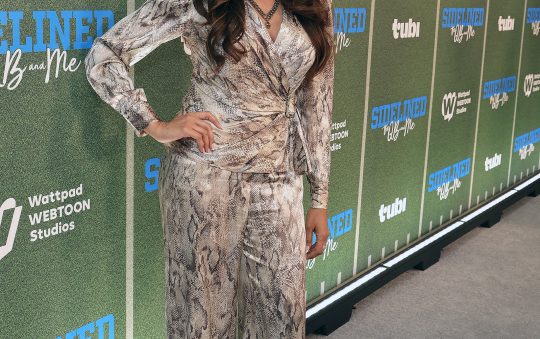The veteran performer on reimagining the legendary film in a new live production

Credit: Zon D’Amour
Since its theatrical release nearly thirty years ago, The Lion King (1994), has become a classic and beloved story that has been adapted into various productions throughout the years. From Broadway to television and most recently, a live-action film in 2019. It’s now been reimagined as a stage production at Disneyland. Through “Tale of a Lion King” a new generation will now get to experience the magic of Simba’s journey from cub to King of Pride Rock.
With June being Black Music month, “Tale of The Lion King” is the perfect addition to Disneyland’s “Celebrate Soulfully”, an array of experiences geared towards highlighting Black culture. Through “Celebrate Soulfully”, guests receive the opportunity to see themselves not only in the characters but in the C-Suite with many African American executives at the helm of these new initiatives. “[Disneyland Parks] have become a source of joy and inspiration for families all around the world,” said Sybil Crum, FAMU alumna and Vice President of Marketing & Commercial Strategy. “When you step into this place, you step into your happy place and that’s really important to us…that we demonstrate more consistency and intentionality in being a source of joy for everyone, especially people that look like you and I, that’s the essence of the work you’re going to see” she said.
“Tale of The Lion King” captivates audiences with all of the elements of the film from the plot to iconic musical numbers. In lieu of using puppets or video interludes, the costuming, choreography by brothers Kevin and Marcel Wilson as well as the natural hair styles provided by Cosmetology Manager Shemika Draughan, allows the skillful actors to transform into various characters which transitions the production along each plot point.
With a career spanning four decades, “Tale of The Lion King” Associate Show Director Paul Bryant speaks with The LA Sentinel about his transition from performer to director as well as the significance of reenvisioning one of the film’s most notable characters.

(Credit: Zon D’Amour)
Los Angeles Sentinel: Can you talk about your journey from performer to director?
Paul Bryant: I’ve literally worked my entire life as a performer. I’ve had an amazing career from Broadway to China. I started off as “a kid at the kingdom” at Walt Disney World in Florida, then I got shipped out here in 1983, then [I traveled to] Japan, Hong Kong and Paris. I’ve worked at all the theme parks. I started being a show director in 2019. As a Director, you have to be able to listen to multiple voices at the same time yet hold true to what your intentions and ideas are for whatever show it is. I love the fact that I get to create and bring new experiences to our guests, first and foremost and then bring new and fresh ideas to the table at the Walt Disney company. We sit and talk about things that we think will encourage guests to come into the parks, something special like “Tale of The Lion King”. We’re so excited to have it expressed by a full company of African American performers.
LAS: A great differentiating factor from the film is the female Rafiki. Can you talk about the decision to reimagine that role for this performance?
PB: I love that you noticed that. We were trying to incorporate Swahili [into “Tale of The Lion King”] and in our research we found that “mwongozo” meant “guide” and that’s what we named that character. Not trying to be Rafiki, but we wanted that wise person. I always refer to her as being the “puppet master” in the show because [her character] directed everything, so that’s how I approached the character. When we talked to our Mongozo [the actress playing the role] I let her know, ‘You are in control of directing and choreographing every move on this stage. They’re the matriarchal, mother earth, when we were casting for that character, that’s what we looked for in that person.

LAS: Can you elaborate on your transition from performer to director?
P: For me, I think it was easier than most, because I’ve always been very astute and keen on what’s going on. As a performer, there came a point where I could no longer kick my leg up to my ear, or bend my back to the floor. When I was on the road with the Broadway show, “Ragtime”, I got put into a position of being the Assistant to the Show Director and one day, the director wasn’t there and it was like ‘Paul you have to do this because we have new people coming in.’ I realized that I remembered all of the intentions from the actual director. One day around the year 2000, it dawned on me, ‘I’m really good at this.’ I approach everything from a very fun, joyful place and I think a lot of times when performers are working with me, they realize that. I’m not the director that’s waving the finger going, ‘Do it my way.’ To be a good director, you have to be a good listener, there’s no ego here, it’s all about having a good time and getting a good product out.







